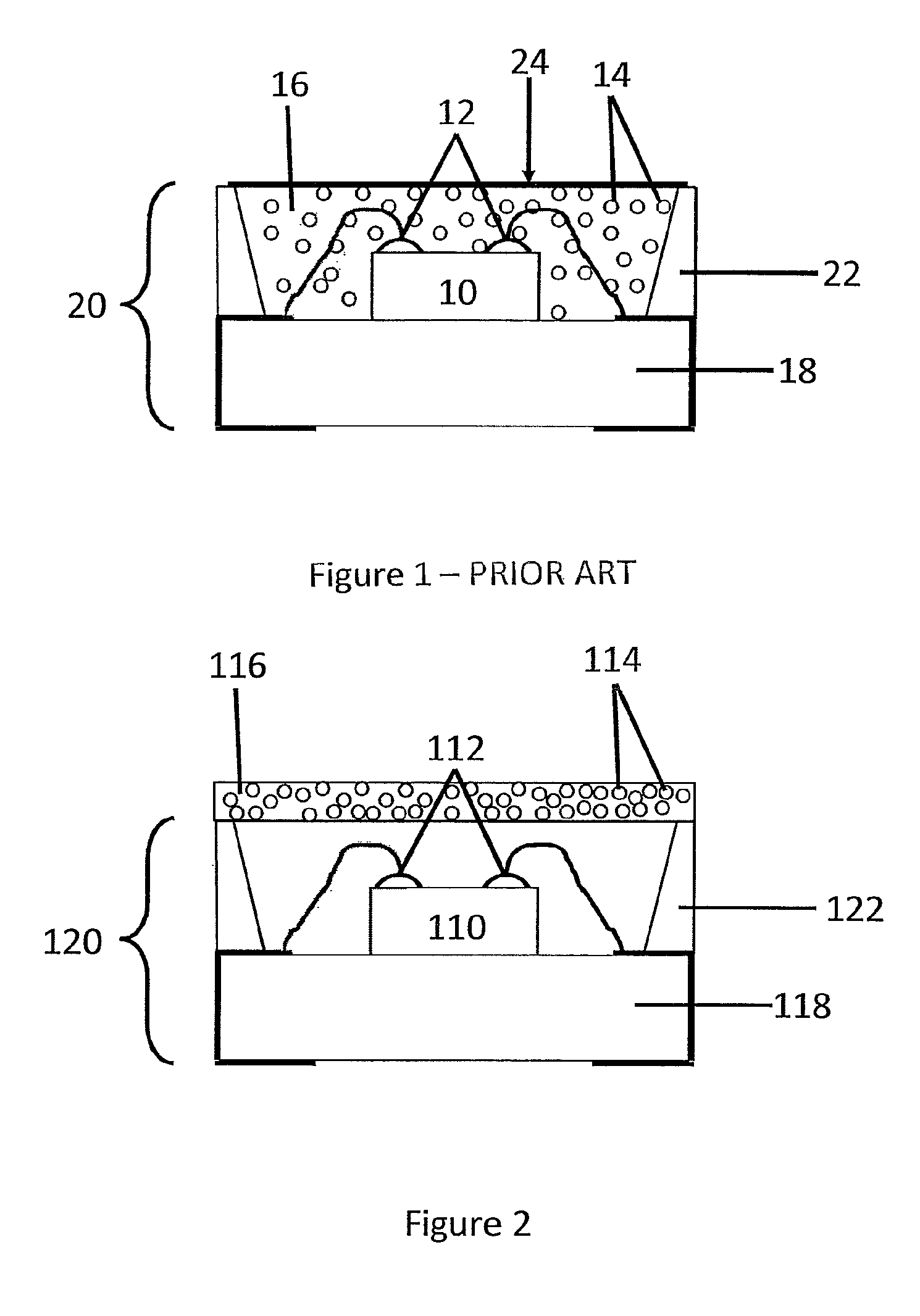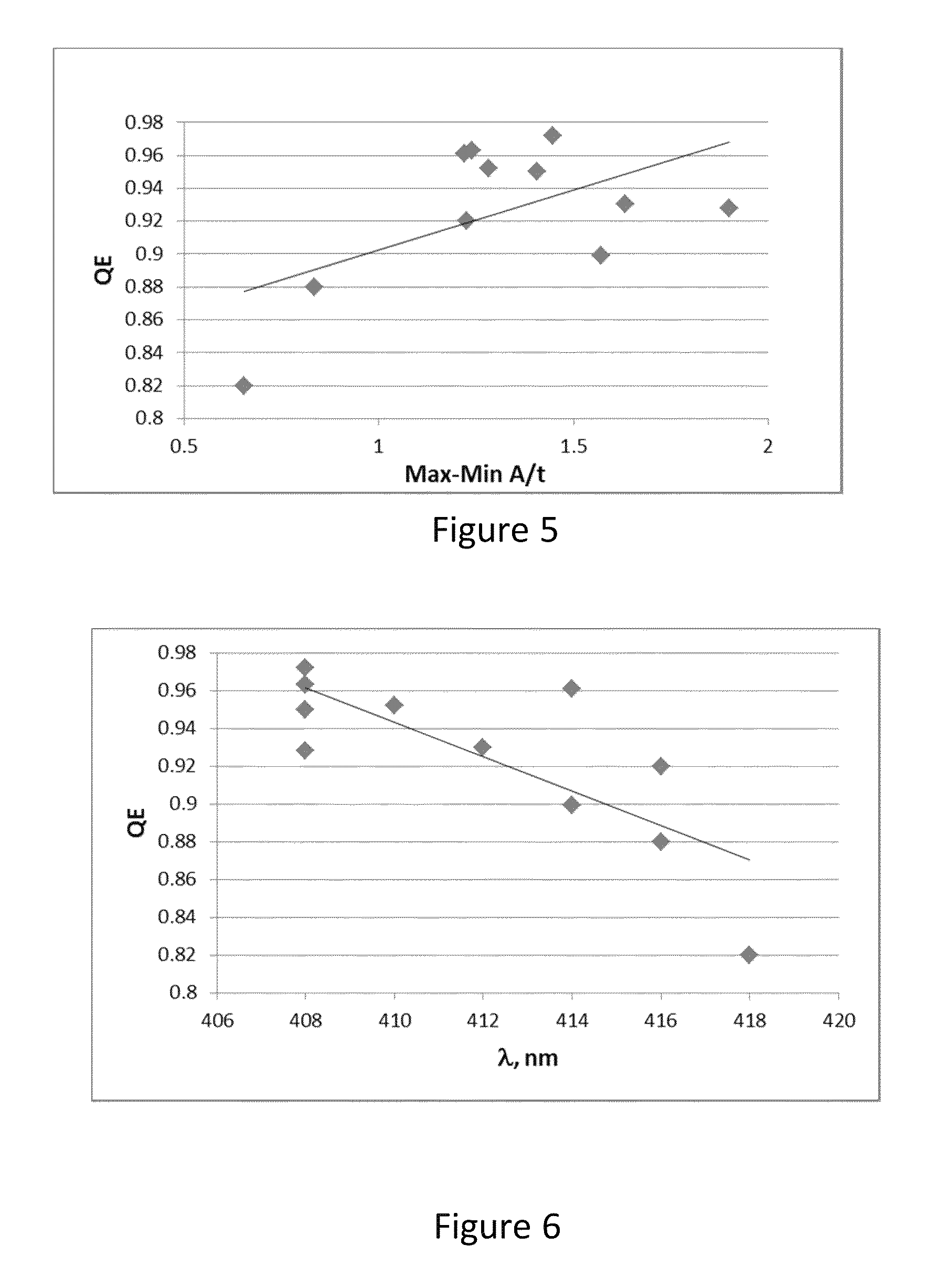Bismuth borate glass encapsulant for LED phosphors
a glass encapsulant and led phosphor technology, applied in the field of glass frits containing phosphors, can solve problems such as degrading led efficiency, and achieve the effects of reducing backscatter, improving chemical and environmental stability, and improving refractive index match
- Summary
- Abstract
- Description
- Claims
- Application Information
AI Technical Summary
Benefits of technology
Problems solved by technology
Method used
Image
Examples
example
[0145]A free-standing glass-phosphor composite was produced as follows: Drigaged exemplary glass 76 (from the Tables below) was dry ball-milled and sieved at −400 mesh to achieve a particle size distribution with d50-15.85 um.
[0146]Commercially available Ce:YAG phosphor powder with d50-14 um was added to the glass powder in a 85 vol % glass / 15 vol % phosphor ratio. PPC binder and a 50 / 50 solvent mix of DMC and PGD were added in the weight fractions shown in the below table. A commercial dispersant made by BYK company, Dispersbyk-142, was used. The ingredients were mixed in a planetary mixer to achieve a uniform tape casting slip. Slip was cast using a conventional 18-mil gap doctor blade on a Teflon-coated Mylar carrier film. After drying the cast green tape was released, cut to size and sintered on a stainless-steel setter board at 510° C. for 2 hours. At this temperature acceptable density and optical quality is achieved while minimizing the possibility of either excessive stickin...
PUM
| Property | Measurement | Unit |
|---|---|---|
| glass transition temperature | aaaaa | aaaaa |
| refractive index | aaaaa | aaaaa |
| quantum efficiency | aaaaa | aaaaa |
Abstract
Description
Claims
Application Information
 Login to View More
Login to View More - R&D
- Intellectual Property
- Life Sciences
- Materials
- Tech Scout
- Unparalleled Data Quality
- Higher Quality Content
- 60% Fewer Hallucinations
Browse by: Latest US Patents, China's latest patents, Technical Efficacy Thesaurus, Application Domain, Technology Topic, Popular Technical Reports.
© 2025 PatSnap. All rights reserved.Legal|Privacy policy|Modern Slavery Act Transparency Statement|Sitemap|About US| Contact US: help@patsnap.com



